Ever wondered about Puma’s captivating world? Then first, you will have to know what a puma is and how it looks.
A huge cat found in both North as well as South America is the puma. It is also frequently referred to as a panther, cougar, or mountain lion. Comparing its size, the only other huge cat found in the Western Hemisphere is the jaguar. Moreover, it is known as Puma concolor in science.
Now, you must be excited to know about pumas’ food varieties, habitat, behavior as well as their lifestyle. Don’t you worry! I have discovered all the secrets of their mysterious world that will surprise you. Let’s explore!
01. Panda Overview
02. Deer Overview
03. Raccoons Overview
Puma’s Form and General Characteristics
Before discovering the puma’s all secrets individually, you should learn about their form and general characteristics. It will help you to imagine the first image of the puma.
Here is a table for your convenience:
| Characteristics | Description |
|---|---|
| Species | Puma concolor |
| Common Name | Puma |
| Size | Medium to large cats, males are larger than females |
| Average Litter Size | 4 |
| Number of Species | 7 |
| Weight | From 115 to 220 pounds (52 to 100kg) |
| Length | From nose to tail Males (Adult)- reach around 7.9 feet (2.4m). Females (Adult)- reach around 6.7 feet (2.0m); |
| Tail | 2.5 to 3 feet; long, cylindrical tail with a black tip. Falls near to the ground |
| Coloration | Tawny, yellow, reddish-brown or gray coat with lighter underparts based on seasonal and geographic variations |
| Skin Type | Fur |
| Ears | Short, rounded ears with white spots behind them |
| Eyes | Yellowish-green or amber |
| Group | Mammal |
| Claws | Four retractable |
| Paws | Large, padded |
| Lifestyle | Crepuscular |
| Habitat | Diverse habitats including forests, mountains, and deserts |
| Location | Mainly North and South America |
| Diet | Carnivore |
| Top Speed | 30mph |
| Behavior | Solitary and territorial |
| Age of Sexual Maturity | 2-3 years |
| Lifespan | 10-15 years |
| Age of weaning | 2 months |
| IUCN list | Least Concern |
In summary, the puma’s overall characteristics underscore its role as a resilient and versatile predator in diverse environments. Their dwelling density is modest.
What Is the Distribution and Habitat of Puma?
Puma mammals, native to North and South America, thrive in rocky crags and meadows. They also adapt to various environments as well. Those are- woods, grasslands, tropical jungles, and deserts.
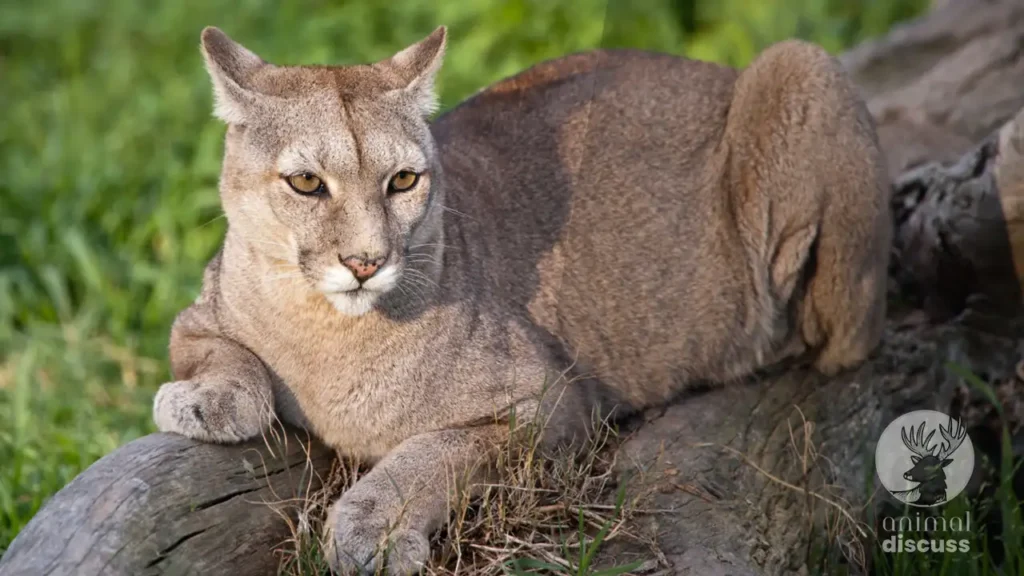
Despite human settlements and land clearance, these species remain thriving due to their adaptability.
For your convenience, I have added a table regarding their habitat. Take a look-
| Region | Habitat Description |
|---|---|
| North America | Dense forests, mountains, grasslands, scrublands |
| South America | Tropical rainforests, savannas, grasslands, mountains |
| Central America | Forests, grasslands, scrublands |
| Europe | Sparse populations in remote forests |
| Asia | Mountainous regions, forests |
Due to hunting, they are now only found in small, remote parts of Mexico, southern Florida, western US, undeveloped landscapes, and southwest Canada in North America.
This solitary hunter is exceptionally agile and navigates diverse terrains effortlessly from thick forests to steep mountains.
Unlike many other large cats, pumas display adaptability and thrive across various landscapes in the Americas. Preferring a solitary lifestyle, they mark territories to avoid conflicts with other individuals.
More curious about Puma’s habitat? Then you should read “full article” to know more.
What Do Pumas Eat?
As ambush predators, pumas consume a broad range of food sources. Its primary food sources are deer, elk, raccoons, horses, capybaras, cattle, and also larger creatures like moose. However, it will consume whatever animal it can catch!
Pumas are well known to hide their enormous prey under bushes and then come back later to finish eating the food. More curious about Puma’s food? Then you should read “Food of Puma” to know more.
How Do Pumas Behave in Their Natural Habitat?
As you know, puma cats are territorial creatures. So, their ranges are influenced by the topography, flora, and quantity of available prey. Due to their reticence, pumas will stay away from populated places.
Male territories can range in size from 58 to 386 square miles, whereas female territories are typically half of that size.
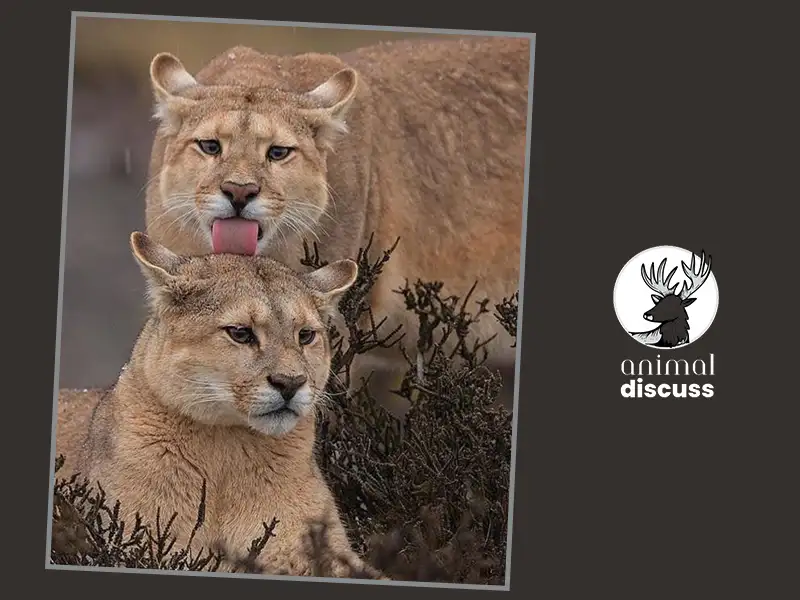
In order to draw potential mates, females mark their territory with scrape marks, urine, and feces. To indicate their territory, males may gather a tiny mound of grasses and leaves and urinate on it.
Pumas will only live in groups with mothers and their offspring. Male and female pumas exclusively mate. Being crepuscular animals, they are mostly active during dawn and twilight.
Further, pumas are recognized for their low-pitched growls, hisses, screams, and purrs. They are talkative cats.
Puma’s Strength and Hunting Strategies
This is not a surprising fact that puma can jump as high as 5.4 meters (18 feet) because they have the largest hind legs in the cat family. And the length of a horizontal jump ranges from 6 to 12 meters (20 to 40 feet).
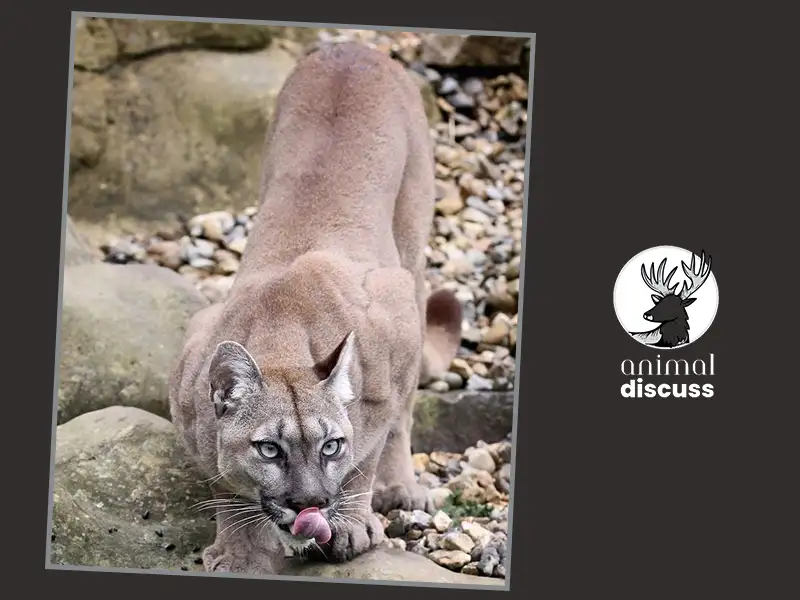
They are extremely quick cats that have been known to reach 30 mph. Nonetheless, their ideal running style is short, rapid, and forceful dashes. Besides, this animal can swim and make excellent climbers.
With a muscular build, the puma excels in stalking and ambushing prey. It also showcases remarkable strength and precision in its hunting strategies. Apart from this, its large, rounded head features keen eyes and sensitive ears. This contributes to its effectiveness as a stealthy predator.
How Do Pumas Reproduce?
You will be surprised to know that it takes a female puma two to three years to reach adult sexuality. Every two to three years, there is a single batch of puma cubs born.
Females experience an 8-day estrous period within a 23-day reproductive cycle. A litter of one to six cubs is born after 91 days of gestation. Thus, maternal caves are caverns or other similar covered spaces where the cubs are protected.
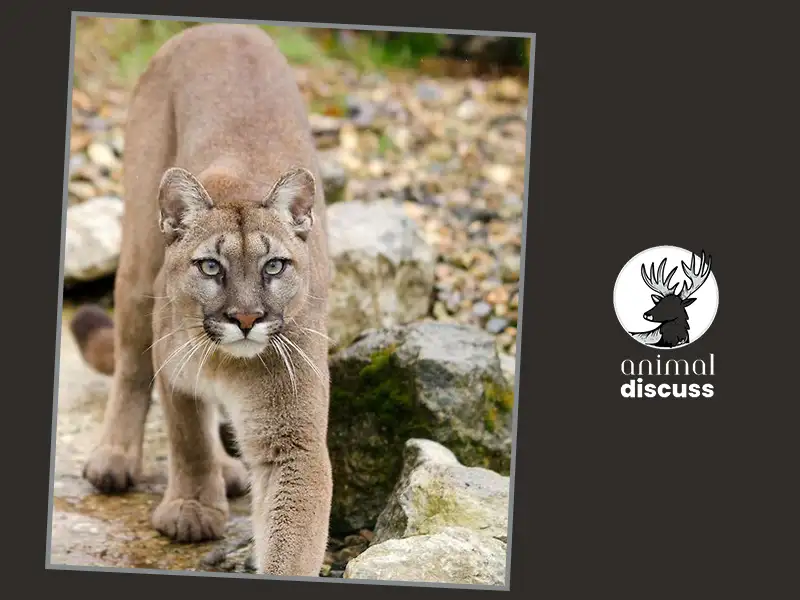
Cubs have bands on the end of their tails and blue eyes when they are born. They are speckled. After being weaned for about three months, the cubs go with their parents to kill spots as they grow. And they begin hunting for their own tiny prey at six months of age.
A mother puma will protect her pups with great ferocity and can repel larger predators like grizzly bears. When they are about two years old, cubs will separate from their mother to claim their own habitat.
Overall, a puma can live for eight to thirteen years in nature and for eighteen to nineteen years in confinement.
Predators That Are a Threat to Pumas
Yes, how come a predator becomes prey? You got that right. As among the most prevalent predators in a large portion of their native habitat, pumas are seldom taken upon by other animals.
It has been documented those other huge predators such as wolves and bears, as well as other pumas, would hunt on pumas.
However, it’s not all the time though, it only happens when they are weak from illness or injury. Additionally, in regions where human activities intersect with their habitats, pumas could potentially pose a risk to livestock.
More curious about Puma’s behavior? Then you should read “our full articles” to know more.
How Do People Affect Pumas and Create Threats?
So, do you know how pumas transform from esteemed predators to terrifying objects? Pumas and native Americans used to coexist in the past. Yes, as a component of nature, they were treasured. But the pumas scared the European colonists when they came.
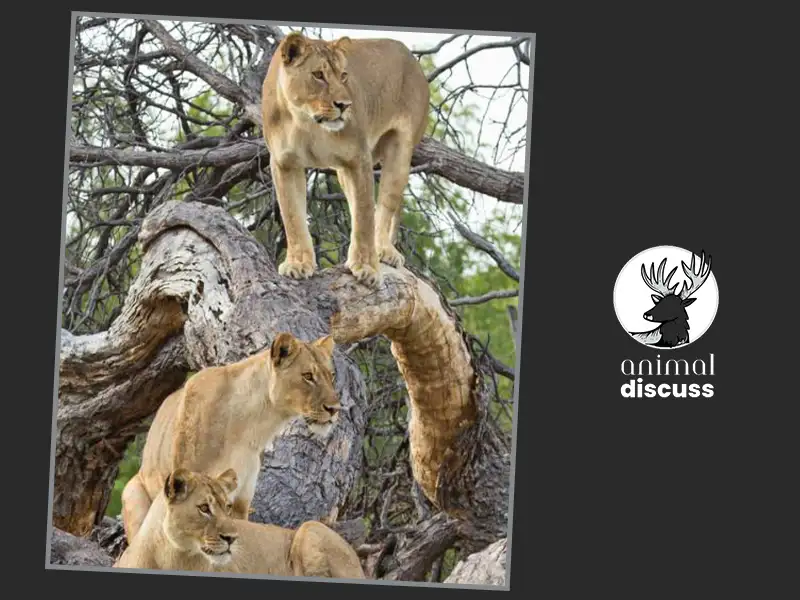
Therefore, people treated them violently. There were bounties on pumas all over the Eastern half of the nation. Thus, they had disappeared from the Eastern half of the continent by the beginning of the 1900s.
Later, the West started to realize their significance in the 1970s. Since then, pumas have gained specific protection as mammals. Regretfully, the only state with pumas and hunting for sport prohibitions is California.
For pumas, human activity poses the biggest risk. For example –
Disintegration and Loss of Habitat
Out of all the land mammals, pumas have the widest range. They have a hundred-mile range! Quite cool! But unfortunately, humans also need plenty of space.
This leads directly to fragmentation and loss of habitat. Thus, the pumas have a number of challenges and must adjust to our existence.
California Depredation Issues
The state of California permits owners of pets and animals to get depredation permits. This means you can kill a cougar that threatens your animals. California granted 182 licenses in 2021.
Conflict Between Humans and Puma
Apart from that, the villainization of wild cats has increased within the past few years. Authorities advise residents to avoid aggressive pumas in their areas. And pumas are portrayed by the media as a danger to public safety.
However, the truth is that dramatic puma encounters are uncommon. On top of that, 95% of all recorded sightings of pumas are not actually pumas, as reported by the California Department of Fish and Wildlife. They are big house cats as well as dogs, deer, raccoons, bobcats and coyotes.
Conservation Strategies and IUCN’s Concern
Puma’s classification on the IUCN Red List is ‘least concern’. Here’s a table regarding the IUCN red list for puma:
| Red List Category | Description | Conservation Actions |
|---|---|---|
| Least Concern (LC) | The population is suitable or increasing wide range | 01. Should protect and restore their habitat 02. Have to implement measures to reduce human-wildlife conflicts 03. Should address illegal hunting and poaching through the enforcement or regulations and awareness |
Frequently Asked Questions
Let’s check out some commonly asked questions together to answer your more queries!
01. Are The Pumas Nocturnal?
Yes. Being a nocturnal mammal, pumas are likely to be energetic during dawn and dusk in addition to being energetic at night. Pumas can occasionally be observed throughout the day, though they are usually busier at night.
02. Are Pumas at Risk of Extinction?
The IUCN has classified pumas as “Near Threatened” or “least concern”. Sadly, human activities such as habitat degradation, poaching, and car accidents put pumas at risk even if they are not in danger from other animals in the wild.
03. How Many Pumas Are There in the World at Present?
The breeding population as a whole has fallen below 50,000. Day by day the number of pumas is still falling because of several reasons.
04. How quick is a Puma’s sprint?
Pumas are built for running and are incredibly athletic. They can sprint for a brief distance at eighteen miles per hour (30 kph).
Final Thoughts
To wrap it up, the puma is a symbol of strength and grace in the wild. Found in various habitats, it plays a crucial role as a top predator and helps maintain balance in ecosystems. Unfortunately, the puma faces challenges like losing its home and conflicts with humans which I have already mentioned in this article.
Through collective efforts, we should aim to secure a future where pumas thrive in their natural environments. So, I hope this article regarding pumas can help you understand the diversity of this animal and spread awareness.
References
- https://www.vedantu.com/animal/puma
- https://kids.britannica.com/kids/article/Puma/390082
- https://tpwd.texas.gov/huntwild/wild/species/mlion/
- https://animaldiversity.org/accounts/Puma_concolor/

